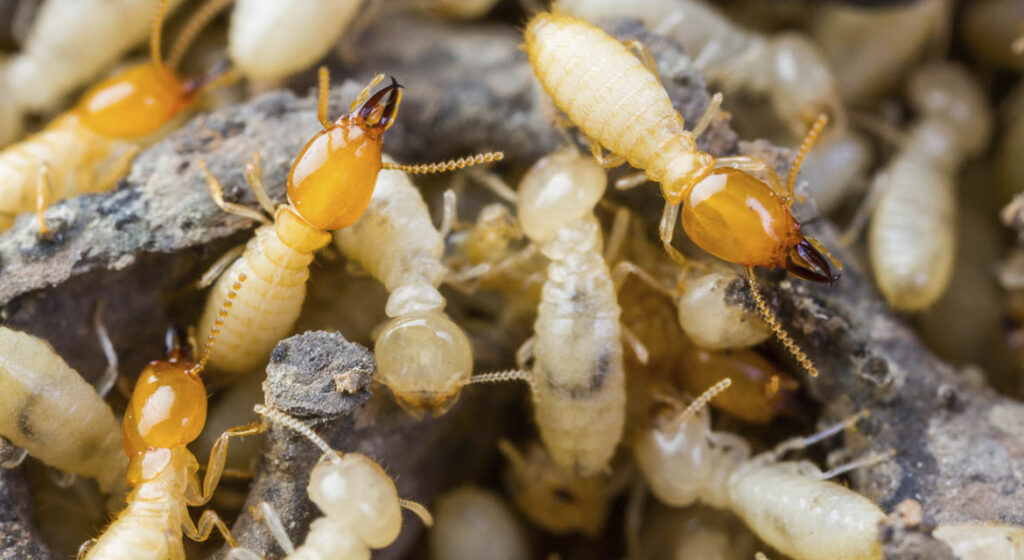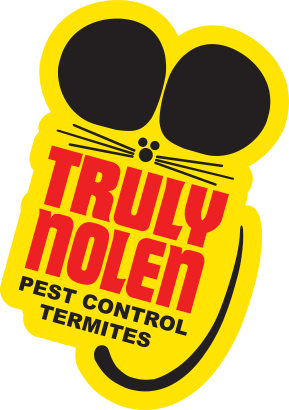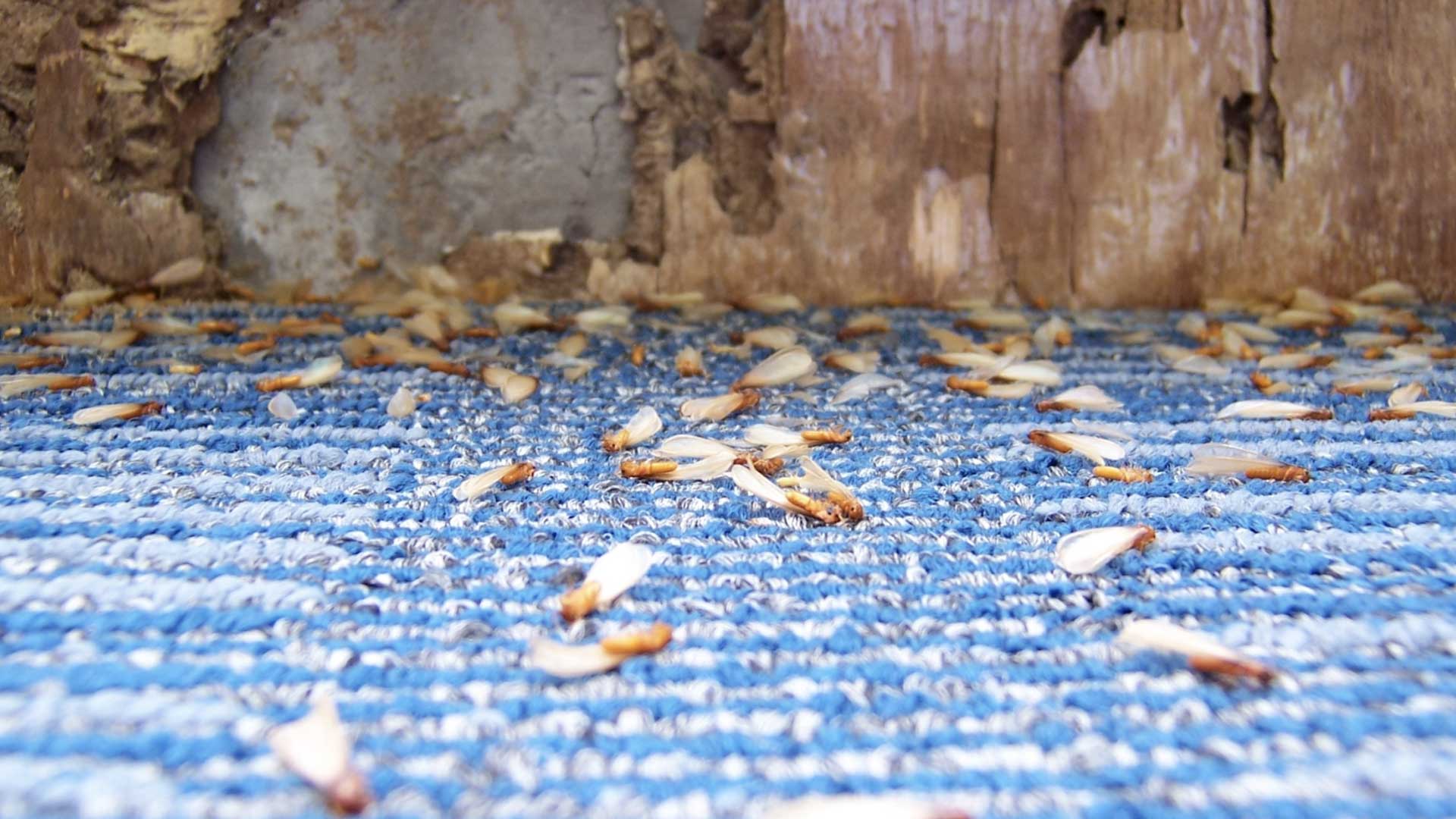
Can I Treat Termites On My Own?
Treating termites on your own is challenging and not recommended due to the need for accurate identification, specialized knowledge, equipment, and techniques that professional pest control experts possess, as well as the ongoing monitoring required for long-term termite management. Consulting a licensed pest control professional is crucial for effective termite treatment and prevention. Here are three main takeaways:
- Properly identifying and assessing the extent of a termite infestation is crucial, and it is recommended to consult a pest control expert for accurate identification and assessment.
- Treating termites requires specialized knowledge, equipment, and techniques that may not be readily available for DIY application.
- While homeowners can implement some preventive measures, long-term termite management typically requires ongoing monitoring and professional expertise to effectively detect and address termite activity.
Termite Treatment Overview
Termites are notorious for causing massive damage to wooden structures, and if you’re a homeowner, it’s essential that you know the signs of termite infestations. Detecting termite activity early on can save you a lot of money in repair costs, so it’s crucial that you learn to recognize the signs of termite infestation.
One of the most noticeable signs of a termite infestation is the presence of mud tubes. These tubes are small tunnels that termites construct out of soil, wood, and other particulate matter to crawl from their underground colony to their food sources. They are usually found snaking up the sides of foundation walls, inside crawl spaces, or on basement walls. If you see mud tubes around your property, it’s a clear indication of active termite colonies nearby.
Another common sign of termite infestation is the presence of termite droppings or frass. Termite droppings are tiny, pellet-like substances that resemble sawdust and clearly indicate termite activity. You may find these droppings near wood surfaces, in spider webs, or on top of floors, cabinets, or windowsills.
Hollow-sounding wood is another indication of termite activity. When termites feed on wood, they consume it from the inside out. This leaves behind thin layers of wood on the outer portion of the boards, which create a hollow sound when tapped. If you tap a piece of wood around your property and it sounds hollow, it’s a significant sign of an infestation.
Damaged wood is also a clear indication of a termite infestation. When termites feed on wood, they leave channels, grooves, and galleries within the wood, causing visible damage to the material. If your wooden structures, floors, or furniture appear to have been chewed on, it is likely a termite infestation.
By being alert to the signs of termite infestations, you can help prevent extensive damages that can be caused by colonies. Be proactive, check around your property for these signs, and contact a professional pest control company to solve the problem before it’s too late. Remember, early detection is the key to successful termite control.
DIY Methods for Treating Termites
Termites can cause extensive property damage and be costly to eliminate. That’s why many homeowners are interested in treating termites on their own. While professional pest control companies can be highly effective, DIY methods can also be successful. Here are some DIY methods for treating termites:
1. Soil treatments
Soil treatments involve creating a barrier around your home to prevent termites from entering. This method involves digging a trench around your home’s foundation and then applying a termite insecticide to the soil. This creates a barrier that termites cannot cross, effectively protecting your home from future infestations.
Soil treatments are most effective when applied directly to the soil beneath a home’s foundation. This type of treatment is typically used in new construction or during major renovations when the soil around the foundation can be accessed easily. Soil treatments are typically more expensive than liquid termiticides because they require excavation work.
However, soil treatments are also more thorough because they offer complete protection against subterranean termites, a significant threat to homes. These treatments involve applying a termiticide to the soil around the foundation and then backfilling the soil to ensure the entire area is treated. In some cases, a physical barrier may also be installed to further prevent termite entry.
2. Liquid treatments
Liquid treatments involve applying a liquid termite insecticide directly onto wooden structures around your home. This method can be highly effective, but using the proper equipment and taking safety precautions is important. These treatments are typically effective for up to 10 years, but it’s important to note that factors like soil moisture and weather conditions can impact their lifespan.
One of the benefits of liquid termiticides is that they can be applied directly to the soil and don’t require any major excavation work. This makes them a relatively quick and easy option for treating a termite infestation. In addition, most liquid termiticides are low in toxicity, which means they can be applied safely around people, pets, and plants.

Truly Nolen GUARANTEE
If you’re not completely satisfied, you’ll get a full refund on your most recent service with our 100% money back guarantee.

$50 Off Year Round Pest Control
Truly Nolen is a family-owned company with 85 years of experience providing the best pest control. If you’re not completely satisfied, you’ll get a full refund on your most recent service with our 100% money back guarantee.
3. Boric acid powder and sprays
Boric acid is a white, odorless powder that has been used for years as a natural insecticide. When ingested by insects, it disrupts their digestive system and ultimately leads to their death. Boric acid is particularly effective against termites, cockroaches, and ants.
One of the benefits of using boric acid to eliminate pests is that it’s relatively safe for humans and pets. It’s also inexpensive and readily available at most hardware and home improvement stores. However, it’s important to follow the instructions carefully when using boric acid, as excessive exposure can be harmful to humans and pets.
One way to use boric acid is to sprinkle a thin layer of powder in areas where pests typically reside, like behind kitchen cabinets or bathroom corners. To maximize its effectiveness, it’s recommended to use a duster or puff bottle to apply the powder in a light and even layer. Alternatively, you can mix the boric acid powder with sugar or another bait to attract pests to the treated area.
Another way to utilize boric acid is through a spray solution. This is particularly useful when trying to control a large infestation. Mix one tablespoon of boric acid with one cup of water in a spray bottle, and shake well before use. Spray the solution in areas where pests are commonly found, taking care to avoid contact with food, dishes, or surfaces that people regularly touch.
It’s important to note that boric acid doesn’t offer a long-term solution to pest control. While it can effectively eliminate current pest problems, it won’t prevent future infestations. Additionally, it’s not effective against all types of pests, and some may require the services of a professional pest control company. If you’re unsure about using boric acid or addressing a pest problem, it’s best to consult a professional to ensure the proper treatment is utilized.
4. Termite baits
Termite baits and bait stations are effective tools for homeowners looking to tackle termite infestations on their own. They work by taking advantage of the foraging behavior of termites. Baits are typically made up of a slow-acting toxic substance that termites ingest and carry back to their colony, effectively killing off the entire termite population.
Bait stations are plastic containers placed in the ground around the perimeter of a home, where termites are known to forage. These stations contain a bait designed to attract termites, which then feed on the bait and carry it back to their colony. Over time, the bait will slowly take effect and eliminate the entire termite colony.
One of the biggest advantages of termite baits and bait stations is that they are non-invasive and don’t require drilling or digging into the home’s foundation. This makes them a convenient and cost-effective option for homeowners who want to tackle a termite infestation without needing professional help.
Termite baits are designed to be slow-acting, which means they won’t immediately kill off termites upon ingestion. Instead, the bait will allow termites to continue feeding on it over several days or even weeks. This will give the termites enough time to ingest and distribute the bait throughout the colony, ultimately eliminating the entire termite population.
One important thing to remember when using termite baits and bait stations is that they are not a solution for immediate termite control. It can take several months for the bait to work, so it’s important to be patient and persistent in applying it and monitoring its progress. In addition, baits may be less effective in areas with high termite activity or where other food sources are available, such as fallen tree stumps or wooden debris.
Termite baits and bait stations are popular and practical choices for homeowners looking to take on termite infestations on their own. They offer a non-invasive and cost-effective option for termite control, with the added advantage of eliminating the entire termite colony. Keep in mind that termite baits may take time to work and may be less effective in areas with high termite activity or other food sources available.
5. Stump removal
Tree stumps can be an eyesore in any yard, but they can also attract pests and pose a safety hazard. If you have recently removed a tree from your yard, you may be wondering what to do with the remaining stump. If you don’t want termites to take up residence in the stump, you need to act quickly to remove it before it becomes an issue.
One option is to have the stump professionally removed. This typically involves grinding down the stump until it is below the ground level. While this can be an effective method, it can also be expensive and time-consuming. Additionally, the cost can vary depending on the size and location of the stump.
If you’re looking for a more DIY option, there are a few methods you can try. One option is to drill holes into the stump and fill them with a stump remover, which can be purchased at most home improvement stores. This will gradually break down the stump over time, although it may take several months to decompose fully.
Another option is to use a chainsaw to cut the stump as close to the ground as possible and then cover the stump with soil and mulch. This will eventually break down the stump, although it may take longer than other methods.
It’s worth noting that leaving a tree stump in your yard can also attract pests such as termites, ants, and beetles. These pests can eventually make their way into your home or cause damage to other trees in your yard. A tree stump can also pose a tripping hazard, especially if you have young children or elderly individuals in your home. Regardless of which removal method you choose, taking care of the stump is essential to prevent pest infestations and safety hazards.
It’s important to note that DIY methods may not be as effective as hiring a professional pest control company. Professionals have access to more powerful insecticides and equipment that can effectively eliminate termites. If you’re experiencing a severe termite infestation, consulting with a professional is highly recommended. By taking proactive measures, you can protect your property from the costly damage caused by termites.
Professional Treatment for Termites
Termites can cause costly damage to homes and other wooden structures if they are not prevented or treated properly. While there are do-it-yourself methods for preventing and treating termites, sometimes the best course of action is to call in a professional pest control company.
Our trained professionals have the knowledge and expertise to accurately identify the type of termites present in your home, the extent of the infestation, and the best treatment options available. They can also provide guidance on preventive measures to keep termites from returning.
One of the main advantages of hiring a professional pest control technician to treat termites is the use of effective termite insecticides. We have access to powerful and specialized termite control products that are unavailable to the general public. These insecticides target the entire termite colony, eliminating the problem at its source.
Our professional technicians can provide long-term solutions to prevent future infestations. They can recommend methods for termite prevention, such as removing tree stumps, reducing moisture levels in and around the home, and using termite-resistant wood for any new construction or renovations.
Another benefit of a professional pest control company like us at Truly Nolen is our ability to safely and effectively apply the treatment. Depending on the severity of the termite infestation, treatment options can include liquid termiticides, bait stations, and physical barriers. We have the equipment and training to ensure the treatment is applied correctly and safely.
While DIY methods for termite prevention and treatment may seem appealing, the best course of action for effective and long-lasting results is to call in a professional pest control company. They can accurately identify the type of termites present and provide effective treatment options, all while ensuring the safety of your home and family.
We use a range of methods to rid your home of pests, including bait traps, chemical treatments, and physical barriers. We also offer preventative measures to keep pests from returning and infesting your home in the future.
Insecticides, Fumigation, Heat Treatments, etc.
When it comes to treating a termite infestation, there are a variety of options available. Insecticides are a common choice and can come in both liquid and foam forms. These products are applied directly to the infested area and can effectively kill termites. However, it’s important to note that insecticides can also be harmful to humans and pets, so trained professionals like ours should apply them.
Fumigation is another option for termite treatment. This involves sealing off a structure and filling it with toxic gas to kill the termites. While fumigation can be effective, it can also be dangerous if not done properly. It’s important to hire a professional pest control company like us. We have years of fumigation experience to ensure the process is safe and effective.
Heat treatments are becoming more popular for termite control. This involves heating the infested area to a temperature that kills the termites. This method is considered eco-friendly and safe for humans and pets. However, it can be more expensive than other treatment options.
Another option for termite treatment is using termite baits and bait stations. These devices are placed around the structure and contain a slow-acting poison that termites carry back to the colony, eventually killing the entire colony. This method can be effective but may take longer to see results than other treatment options.
Natural parasites, such as nematodes, can also effectively control termite populations. Nematodes are tiny worms that can be introduced into the soil around a termite colony, where they infect and kill the termites. This method is eco-friendly and safe for humans and pets but also may not be as effective as other treatment options.
Boric acid is another effective treatment option. It can be applied directly to wood or used to create bait. Boric acid interferes with the termites’ digestive systems, causing them to starve. While boric acid is generally considered safe for humans and pets, it can be toxic if ingested in large quantities.
In addition to these treatment options, it’s essential to take preventative measures to avoid future termite infestations. This can include removing tree stumps and other sources of wood debris around the property, using termite-resistant wood for construction, and installing termite barriers around the structure.

$50 Off Year Round Pest Control
Truly Nolen is a family-owned company with 85 years of experience providing the best pest control. If you’re not completely satisfied, you’ll get a full refund on your most recent service with our 100% money back guarantee.
Barriers to Prevent Future Infestations
A termite barrier is a chemical barrier placed beneath the soil around a home’s foundation. It creates a zone of chemical protection, preventing termites from entering your home. There are two types of termite barriers: chemical and physical.
Chemical barriers are applied to the soil before construction or during a home renovation. They can also be used around the foundation of an existing home. These barriers are designed to kill or repel termites before they can enter the structure.
On the other hand, physical barriers are solid materials placed in the soil to block termites from entering the home. These barriers can be made of metal, mesh, or plastic. The goal of a physical barrier is to create a physical barrier that termites cannot penetrate.
Installing a termite barrier is an effective way to prevent termites from entering your home. One of the most significant advantages of a termite barrier is that it provides long-term protection against infestations. The barrier is designed to last for several years, and in some cases, it can protect for up to ten years.
Another advantage of a termite barrier is that it reduces the need for chemical treatments inside the home. If a barrier is installed properly, it can eliminate the need for regular termite treatments, which can be costly and time-consuming.
Installing a termite barrier is not a DIY project and requires the expertise of a professional technician like ours. The first step is to inspect your home to determine the best type of barrier for your particular situation. One of our pest control pros can provide guidance on the different types of barriers available and which one is best for your home.
Benefits of Hiring a Pro
One of the biggest benefits of hiring a pest control company is their use of professional-grade pesticides and treatments that are often more effective at eliminating pests than over-the-counter products available to consumers. Pest control professionals are knowledgeable about the specific pesticides and treatments that work best for different pests, and they have access to specialized equipment and tools that allow them to apply these products safely and effectively.
Hiring a pest control company can also save you time and money in the long run. While it may be tempting to try and handle a pest problem on your own, the cost of repeatedly purchasing over-the-counter treatments and the time spent trying to eradicate pests from your home can quickly add up. A pest control company can often get the job done in one or two visits, saving you both time and money.
If you’re struggling with a pest infestation in your home, DIY methods may work, but it’s worth considering hiring a professional pest control company. With their expertise, tools, and treatments, they can quickly and effectively remove pests from your home, giving you and your family peace of mind and a safe, healthy living environment.

$50 Off Year Round Pest Control
Truly Nolen is a family-owned company with 85 years of experience providing the best pest control. If you’re not completely satisfied, you’ll get a full refund on your most recent service with our 100% money back guarantee.
Frequently Asked Questions
Can I treat termites on my own?
While some DIY products exist, effective termite control often requires professional expertise and specialized equipment for thorough elimination and long-term protection. Learn more about termites
Are termites harmful to humans?
While termites don’t pose direct health threats, their presence can cause significant structural damage and financial implications. Learn More!
How do I know if I have termites?
Look for signs like mud tubes, discarded wings, damaged wood with hollowed-out sections, and droppings resembling wood pellets. Learn More!
How much does termite treatment cost?
The cost varies based on factors like the extent of the infestation, property size, and chosen treatment method. It’s best to request a professional inspection and obtain a customized quote. Learn More!
How can I prevent termite infestations?
Prevention includes reducing moisture, maintaining proper ventilation, removing wood-to-soil contact, and conducting regular inspections. Learn More!

